Lesson
12: MSW Landfills
Introduction
Read:
Definition:
engineered method of disposing of solid waste on land in a manner that protects
the environment
Operation:
spread refuse in thin layer, compact it, place daily cover (soil, ADC, geonet,
tarp, etc.) over waste at end of day
Compaction of Placed Waste
(Note: New Construction) |
Compaction of Daily Cover |
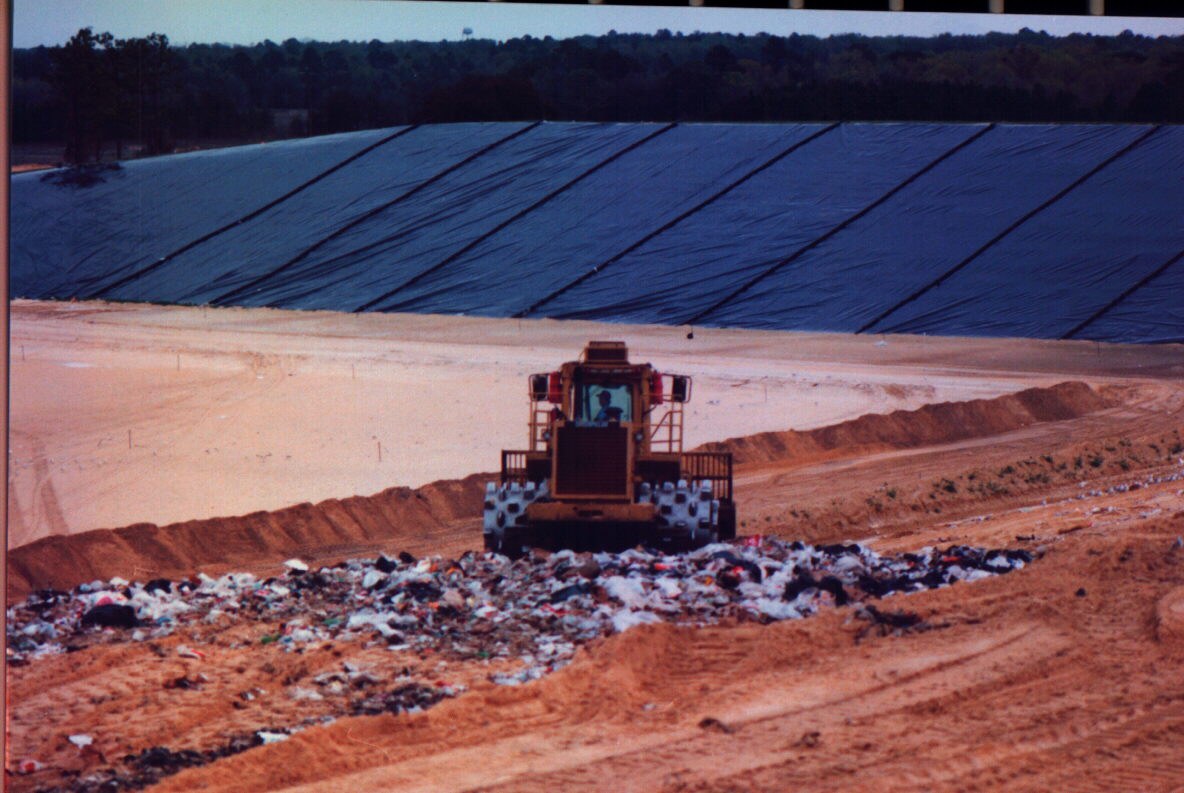 |
 |
|
Equipment Used to Apply Foam as Daily Cover Material
|
 |
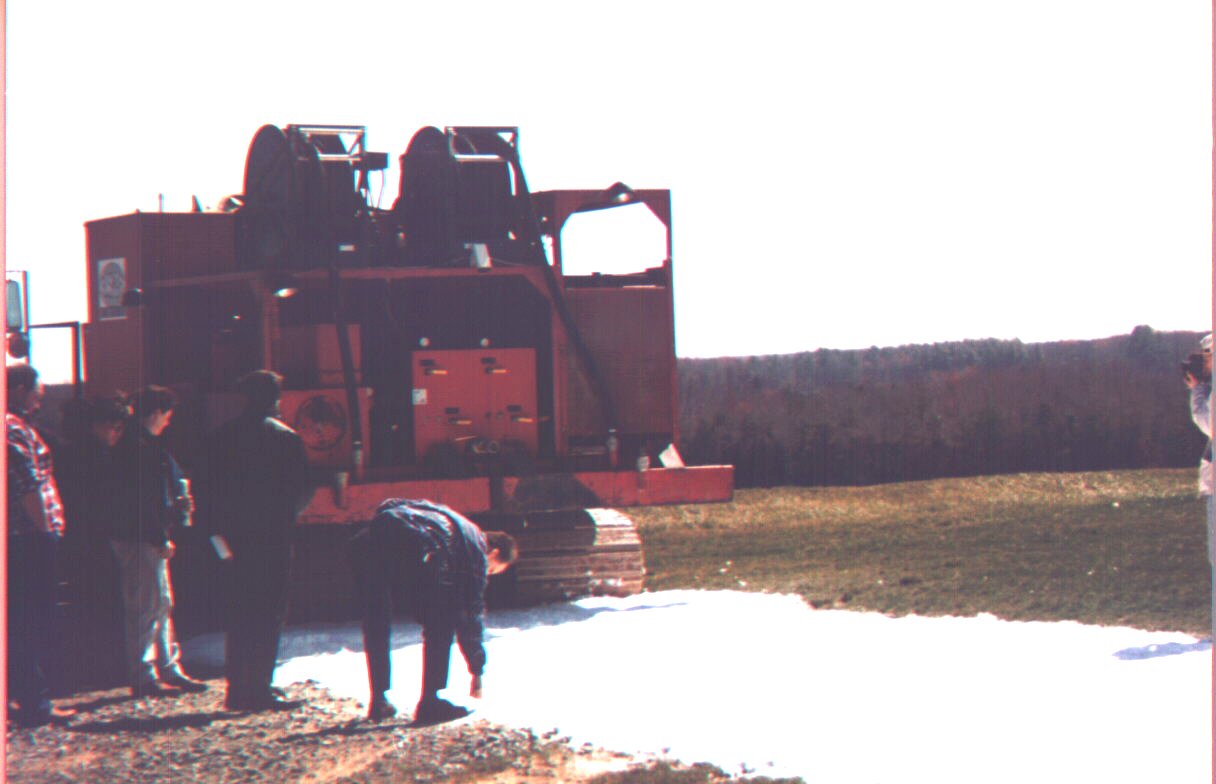 |
Older Landfill(Note Covered Waste Cells
and Recently Placed Waste at Right) |
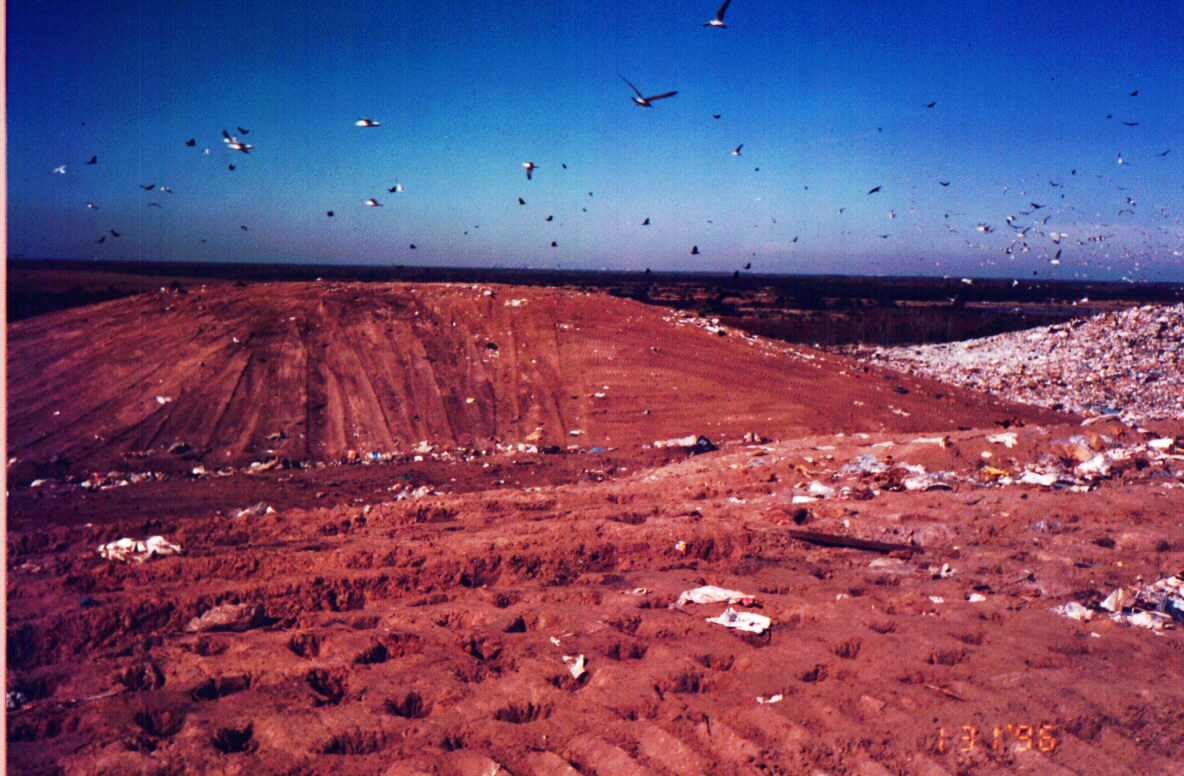 |
Landfill Types
- Moisture
- Dry LF - keep waste dry to limit biological activity
- Wet LF - leachate recirculation used to moisten waste, bioreactor
- Use
- Municipal (sanitary)
- Hazardous
- Controlled LF - co-disposal
- Configuration
- Above ground LF - catch pan design - 3:1 or 4:1 slope
- Under ground LF - valley or depression used
- Special LF
- Conventional
- LF for milled (shredded) SW (35% greater in place density, daily cover
not required)
- Bale fills - waste compacted and baled prior to placement
- ”Mono-fill” LF - specialized cells - aesbestos, incinerator ash, anaerobic
decomp of yard waste
Construction Techniques
- Excavation method - ground water table (GWT) is distant from surface
- Trenches are excavated,L=100-400ft, W=15-25ft, D=10-15ft
- SW is dumped into trenches
- Tractors/compactors spread & compact refuse by pushing it up the working
face - multiple passes are made to maximize compaction
- Soil cover is placed on refuse, obtained from excavation
- Above ground method - used when excavation method is not feasible
- SW is unloaded and spread in long narrow strips (15-30in thick)
- Placement in strips is repeated multiple times until a predetermined cell
thickness is reached (usually 5-20 ft)
- Cover soil is applied (6-12in) at end of day (geotextiles, foams, ground
tires, compost, and other materials are often used)
- Embankment (working face) slope - 3:1 or 4:1
- Canyon/depression method
- Similar operational technique to Above Ground Method
- Used in areas where depressions (natural or artificial) exist, (canyons,
valleys, ravines, borrow pits)
Modern Landfills
- Leachate recirculation system (LRS)used to enhance biological activity
- Accelerate Lf stabilization
- Accelerate decomposition of organic SW
- In-situ storage and treatment facilities for leachate
- Increase biogass production
- Reduce liability, care, and post-closure costs
- Attenuation capacity against toxicity
| Vertical Wells for Leachate Introduction |
Lysimeter at Delaware Solid Waste
Authority Note: Leachate Wells |
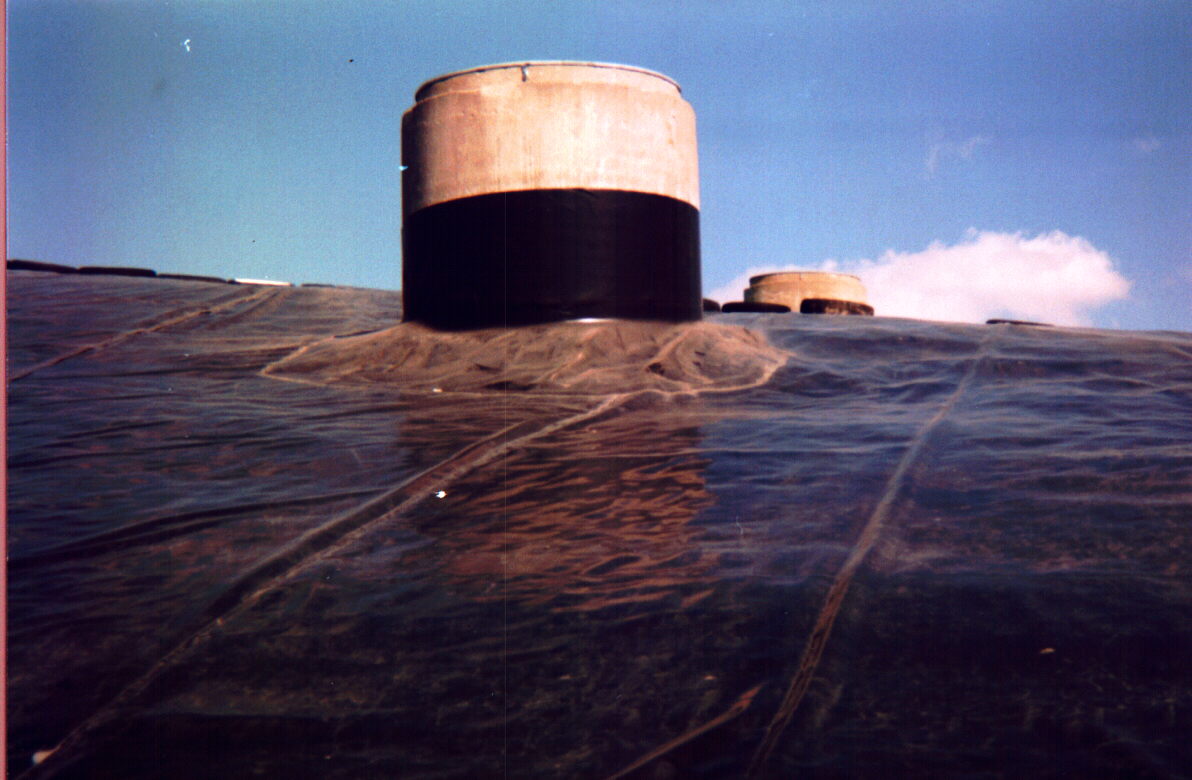 |
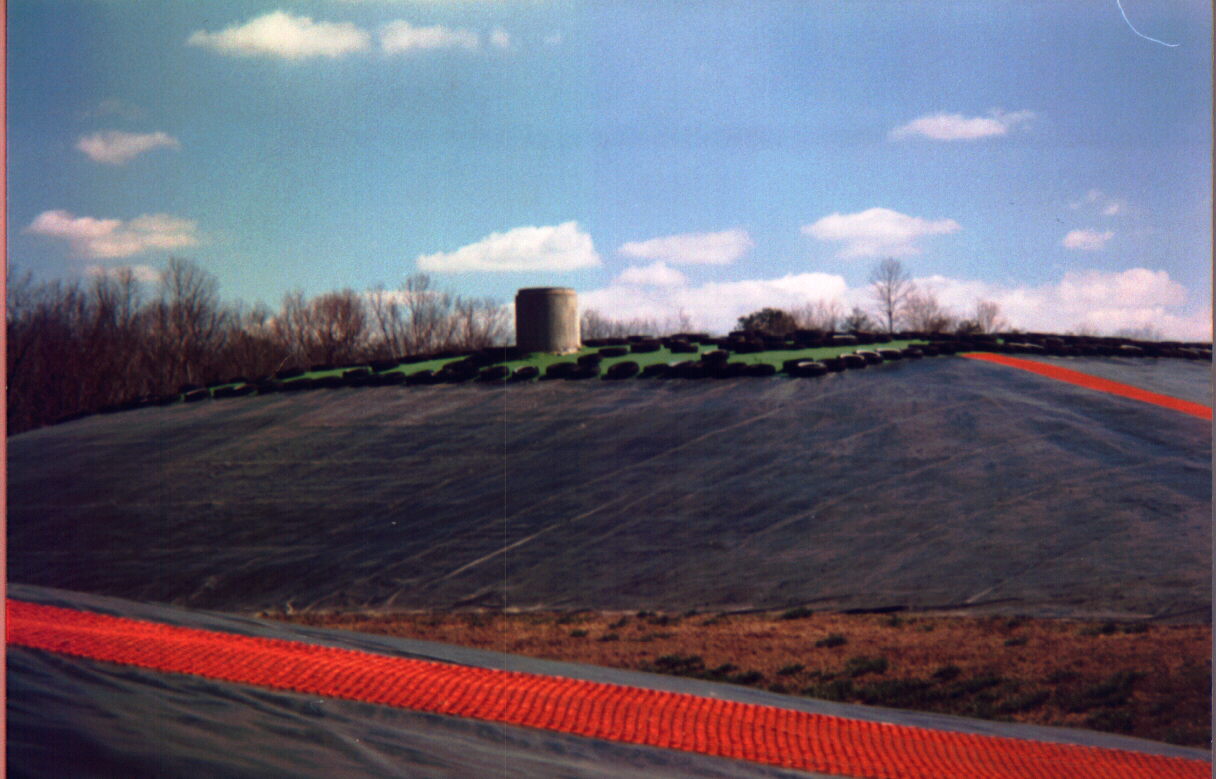 |
- Co-disposal with sewage sludge
- Moisture
- Micro-organisms
- Buffering capacity
- Nutrients
- Gas recovery systems - energy recovery
Site Selection
- Large enough to accomodate the SW needs of the area it serves (lifetime,
10 yrs)
- Compatible with the local SW management programs
- Site must protect public health, safety, welfare, & environment
- Minimize adverse impacts on surrounding area
- Minimeze adverse impacts on property value
- Minimize impacts on traffic flow
- Minimize potential for fire, spill, accidents
- Outside the 100 year flood plain
- Far from airports (birds) - 10,000’ from jet ports, 5,000’ from other airports
- Provide emergency response plan including notification, evacuation, &
containment procedures
Factors Affecting site selection
- Land availability
- Haul distance
- Impact on SW management program
- Soil conditions and topography
- Geological conditions - no LF within 200’ of fault or unstable area, seismic
activity
- Hydrologic conditions (surface and ground water) ----- leachate concerns
- Climatic conditions (rainfall and wind)
- Environmental and ecological conditions
- Public input and concerns - NIMBY, NIMTOO
- Potential use after closure
Define:
- leachate -
- LCRS (LCS) -
- LRS
- GCS -
- lifts -
- cells -
- cover -
- cap -
Page last updated April 5, 2017 by Dr.
McCreanor








